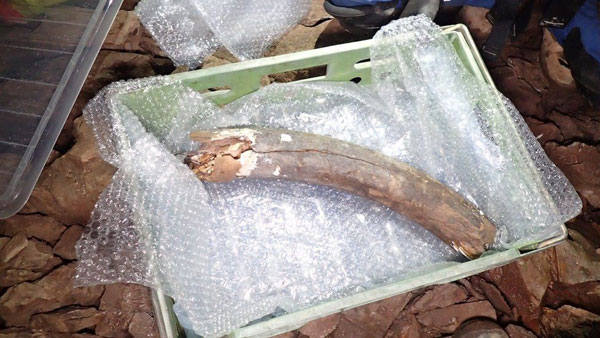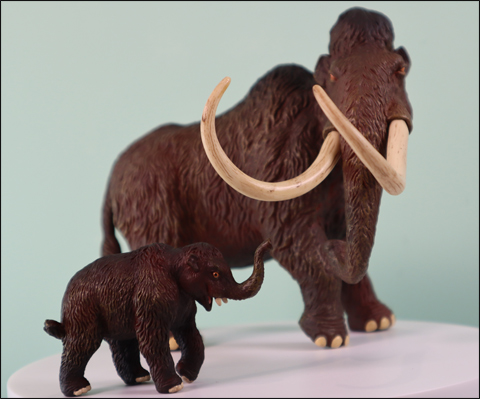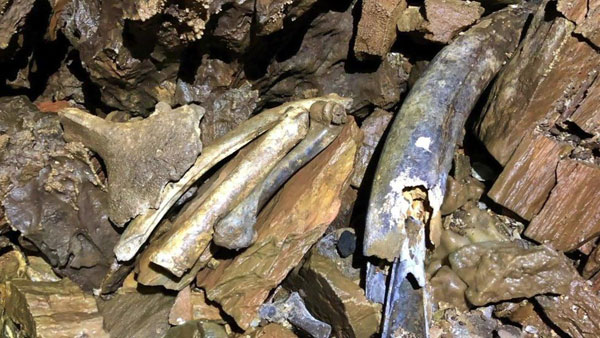Ice Age Animal Remains Found in Devon
The remains of several different types of Ice Age mammal that inhabited south-western England have been recovered from a cave in Devon. The fossils, which are estimated to be between 30,000 and 60,000 years old provide scientists with a unique perspective on the fauna that existed during the Devensian, or the Last Glacial Period (LGP). Although ice sheets did not reach south-western England, Devon would have experienced extreme cold, tundra-like conditions.
Animal remains found in the cave include the partial remains of a Woolly Mammoth (Mammuthus primigenius), bones from a Woolly Rhinoceros (Coelodonta antiquitatis), the skeleton of a wolf, plus hyena, red fox, horse, reindeer and mountain hare fossils.
Picture credit: Historic England
An “Exceptional” Fossil Site
A substantial new town consisting of over 5,000 new houses and related infrastructure is being built close to Plymouth. The Sherford Consortium, the developers, state that the cave was located close to old lime kilns and Sherford Quarry. Commenting on the significance of the discovery, Duncan Wilson, Chief Executive of Historic England stated that these fossils were “exceptional” and added:
“To have found partial remains of such a range of species here in Devon gives us a brilliant insight into the animals which roamed around Ice Age Britain thousands of years ago, as well as a better understanding of the environment and climate at the time.”

Part of a mammoth tusk carefully being packed into a box for transport off the dig site. Picture credit: AC Archaeology.
Picture credit: AC Archaeology
Ice Age Animal Remains
A team of experts have been brought in to carefully document and record the fossil finds. The fossils, including an exceptionally preserved lower jaw from a Woolly Rhinoceros (C. antiquitatis), are currently being studied. It is hoped that this collection of Ice Age remains will be able to stay in the county, with the most likely final destination for the fossils being “The Box”, a recently opened museum in Plymouth close to the University.

A lower jaw from a Woolly Rhinoceros with some teeth in situ with two additional teeth. Picture credit: AC Archaeology.
Picture credit: AC Archaeology
The Mammoth Gallery
Proposals have been made to put the fossils on permanent display in the Mammoth Gallery of The Box Museum. Plymouth’s former Museum and Art Gallery was re-opened as “The Box” in 2020 following extensive development and renovation. The Mammoth Gallery at the museum explores the natural history of Devon and includes many fossil specimens of the Ice Age fauna associated with south-western England.
The excavation and removal of the fragile fossils involved specialist archaeologists such as those from AC Archaeology, independent archaeological consultants and contractors who provide advice on historic environment issues to developers, local authorities and national bodies.

The CollectA Deluxe Woolly Mammoth model in 1:20 scale and the CollectA Prehistoric Life Woolly Mammoth calf. Woolly Mammoths roamed Devon. Picture credit: Everything Dinosaur.
Picture credit: Everything Dinosaur


